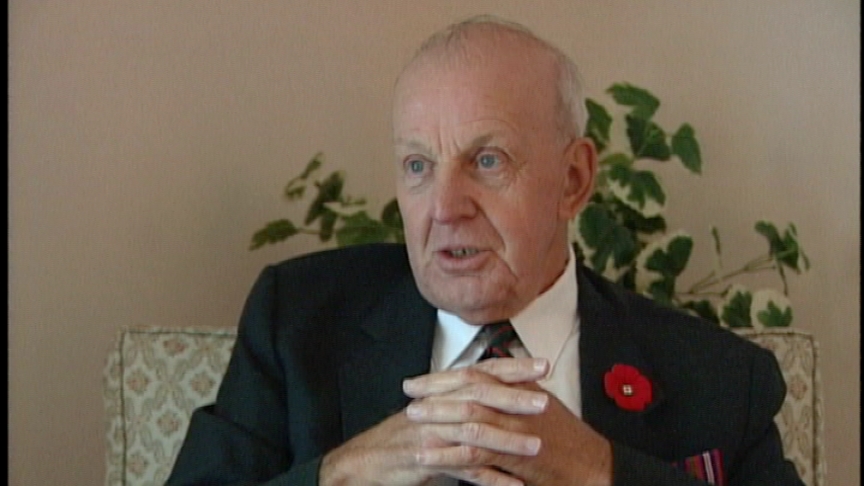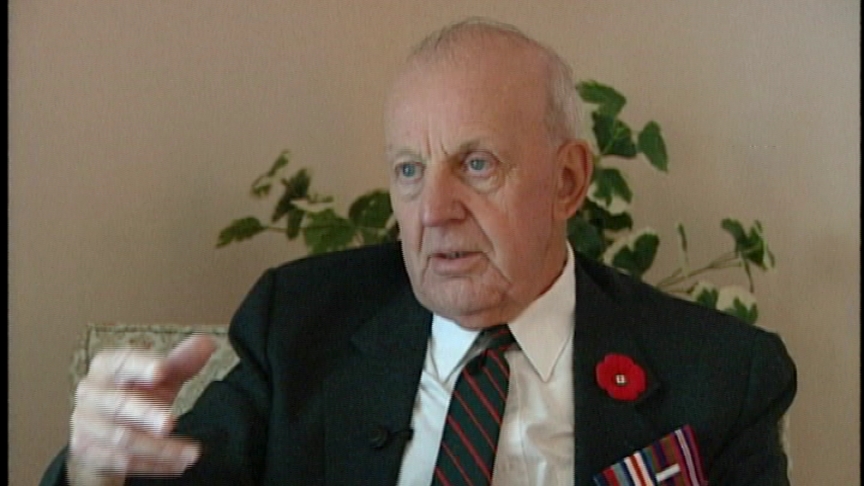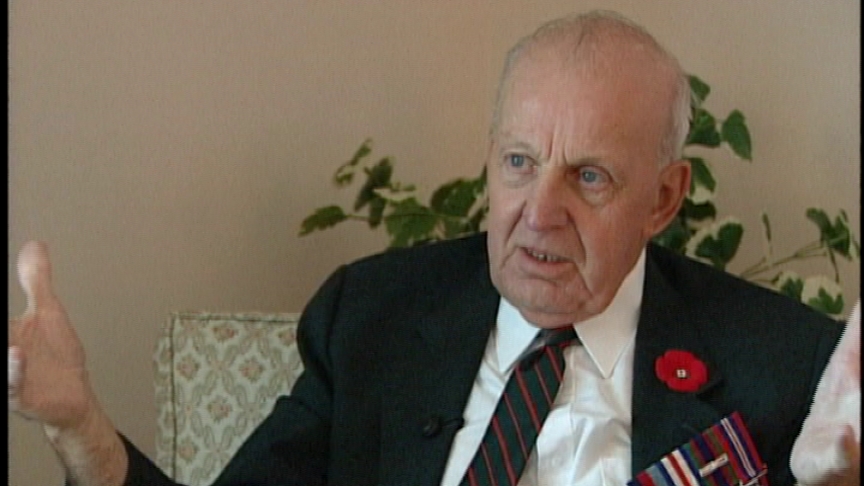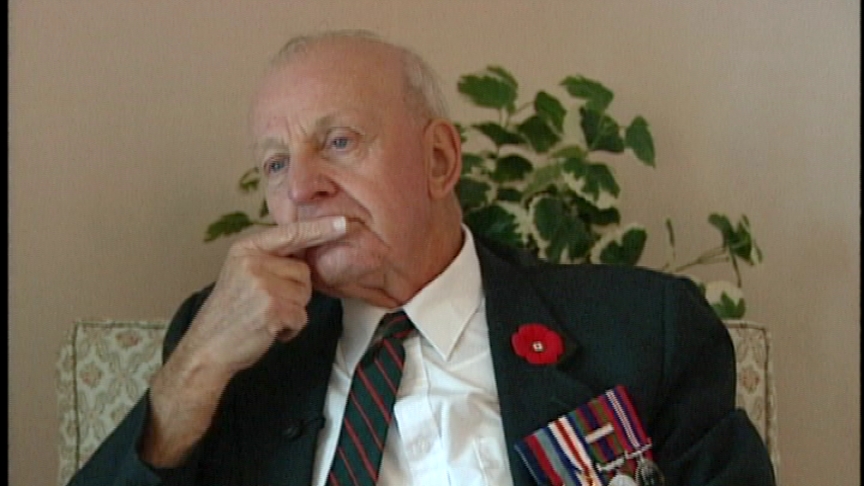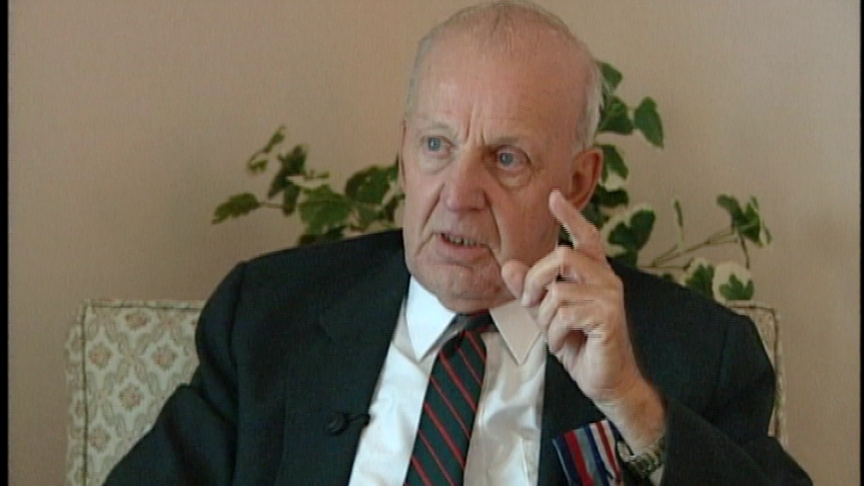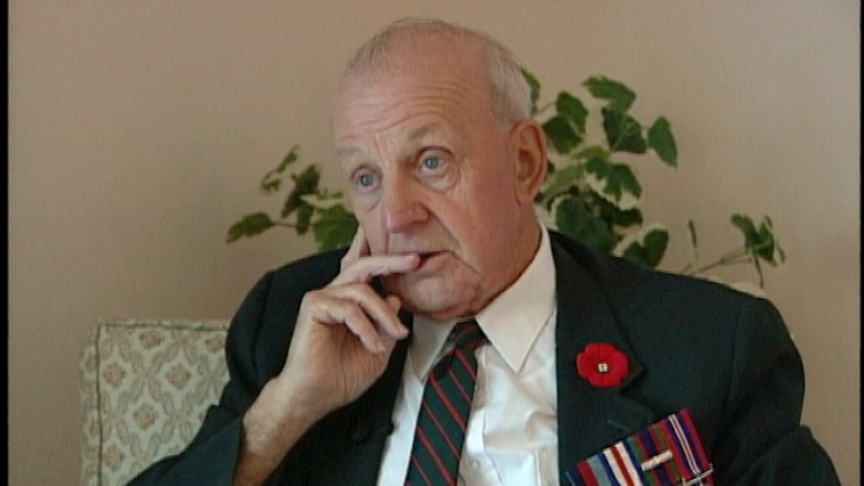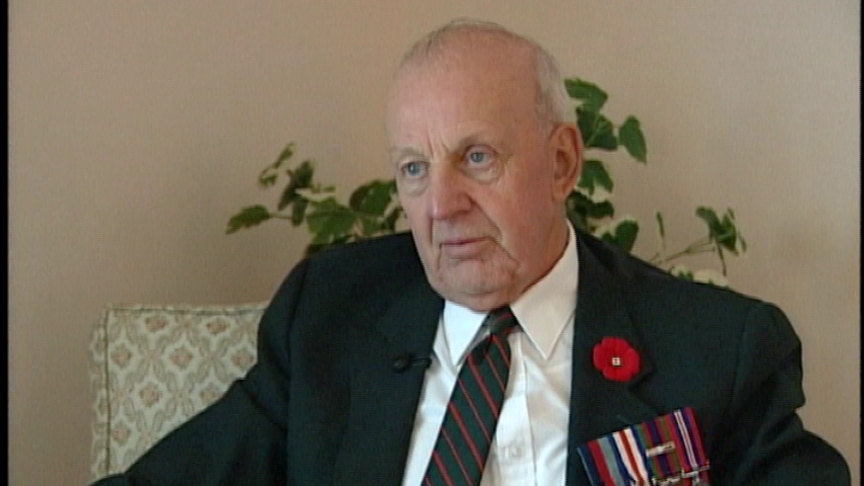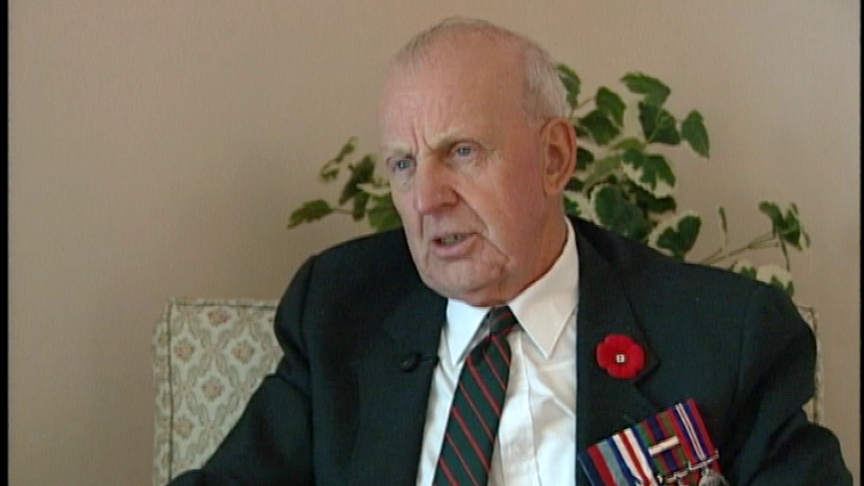The plan of attack was, from the 3rd Division point of view,
was to cross Leopold Canal and push it’s way through up to
Ijzendijke and so on up to Bresken. But, they lined up to help
the 7th Brigade cross the canal. They lined up the Wasps, the
flame thrower, the Bren gun carriers, which were flamethrowers.
And they lined them up along the canal and they shot flame over
the canals from about, I don’t know maybe. I don’t know how many
carriers they used but there was a substantial number, maybe
about 27 or something like that. I don’t know the exact number.
But they give quite a broad coverage there so that they could
hopefully get a foothold on the other side. Although, they did
get across the canal, the fighting was treacherous, and the
7th Brigade suffered quite severely in that hand-to-hand conflict
And so, knowing the intensity and the depth of the defences and
the manner in which the German soldiers were fighting, they came
up with another plan. And they’re, they developed a scheme
to come up with another invasion. Come in from the rear on the
right flank with, with Buffalos. A Buffalo is a big track vehicle
like a tank but it’s made to float and be propelled in water.
It could carry maybe a platoon of infantry or a carrier with a,
with a section of men and they would drive off the, load up and
drive down into the water and traverse across the water to
whatever their objective was. The starting base for the attack,
primarily the 9th Brigade led the attack and then our brigade,
the 8th, followed behind them. The HLI and the Stormont Dundas,
the Stormont Dundas and Glengarry Highlanders, the Highland Light
Infantry and North Nova Scotia Highlanders, they went on their
Buffalo and the departure point was at, around Terneuzen,
in Holland. And they were going through a little section of
water crossing. I can’t remember the name, it was a Dutch
expanded name, you know. But, they went in and they had two
beaches that they were landed on. And you must remember that,
across the way, there was still, on the opposite side, there was
still the German territory, subject to considerable artillery
fire and so on. But they, they went in and hid undercover and
they got a strong foothold on and then, late in the afternoon,
we went in, in behind the HLI. And, I always, you know, we hear
about the Provost Corps, you know, we figure Provost Corps is a
policeman and things like this, you know, but they’re also
directing traffic on the beach, and I can recall this particular
Provost Corps as we drove off that particular beach up from the
Buffalo. And he’s standing there, he’s got his slit trench beside
him and he’s directing the movement of the traffic and
periodically we’re getting shells dropping in all around us,
and he’s still there. I take a hat, a hat off to that guy,
you know, he was a very brave man.



